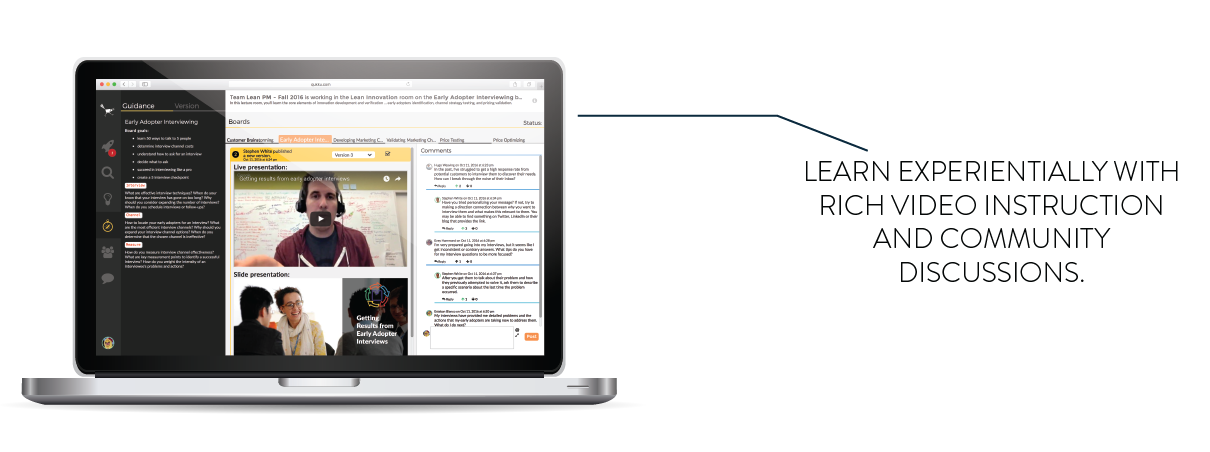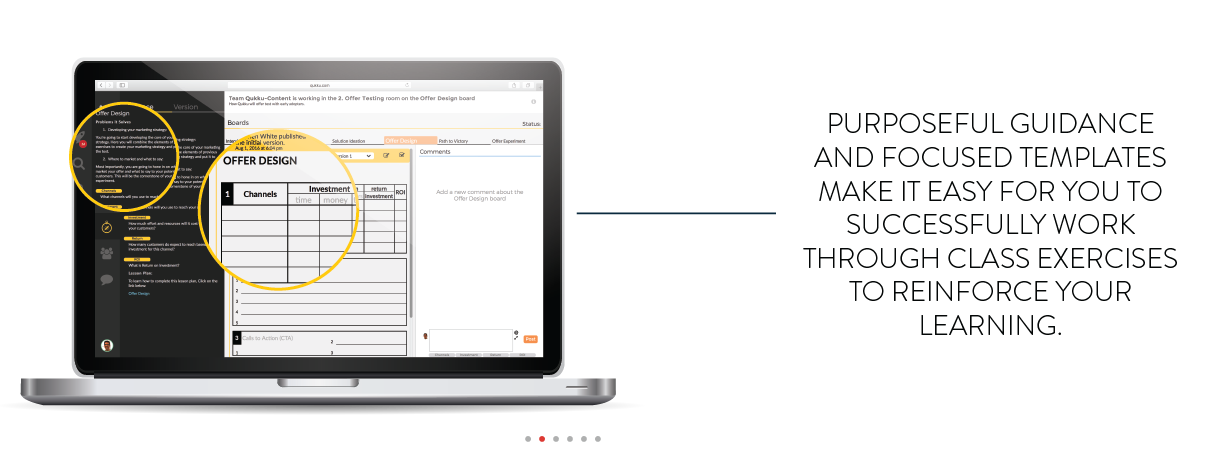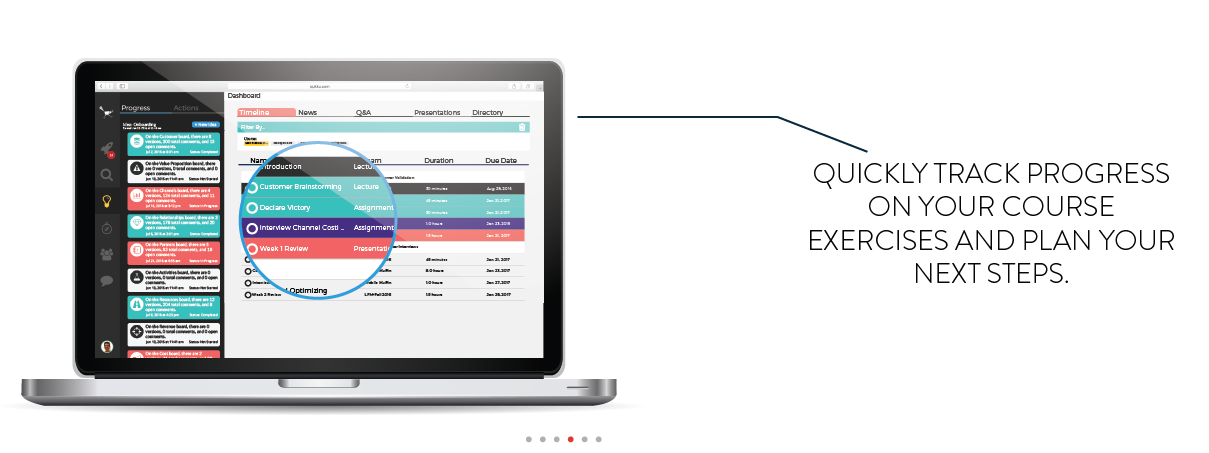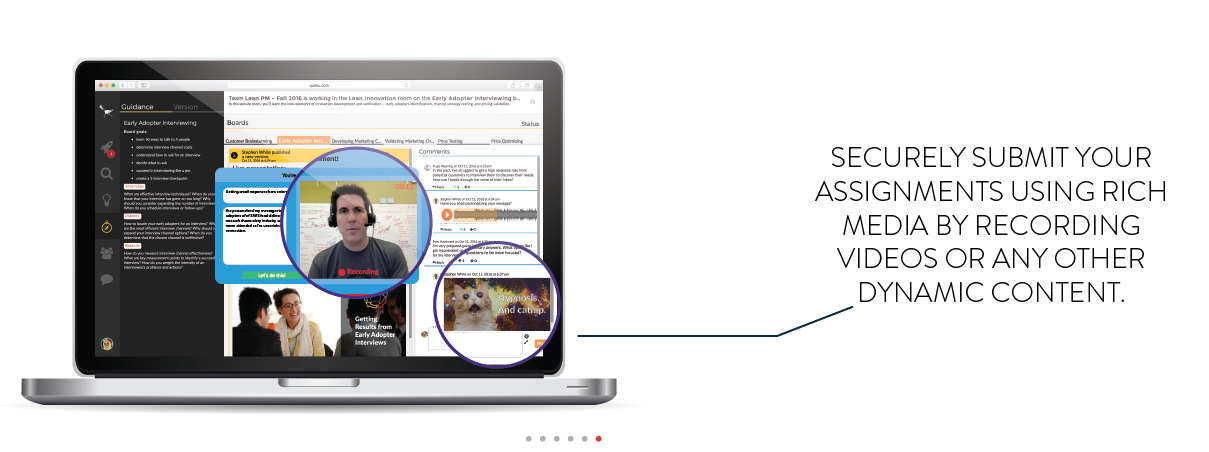
guide Topics
Click the + WORKSHOP NAME to see additional details
+ Value Defined
Essential question: How do you identify & prioritize all of the sub-problems associated with the main problem that you’re solving for the customer with your product?
Objectives: Discover how to analyze a customer’s problem and related emotion to create the delightful solution for your user.
Explore the 5 steps of the User’s Journey and how it helps you to understand user emotions when encountering a problem
Learn how to identify solutions to all of the secondary problems encountered by a user when they’re trying to solve their problem
Explore the 3 ways that value can be delivered to your user
Understand how value delivery maps to features, which are linked to customer emotions
Identify the 3 key metrics necessary to assess value delivery
By first defining how a product feature delivers value, you’ll be able to understand which limited features to build first and deliver incremental value to your customers without falling into the trap of designing an all-or-nothing product.
If you’ve built a product or service with features that your customers rarely use, this lesson will teach you how to map features directly to the problems the user wants solved and define what comprises a minimal feature worth building so that you won’t build the wrong product that your customer doesn’t actually want.
+ Value Creation
Essential question: How do entrepreneurs design features that solve a problem while delivering the desired emotion to a user?
Objectives: Learn how to design features based on value delivery and discover how to test those features before building them.
Learn how to implement your features manually to know that they work before automating them
Understand how the User’s Journey helps you implement features that make it self-evident to become aware of the feature, use the feature and feel the positive emotion as a result of using the feature
Explore how to test what value your customer perceives that each feature delivers
Compare the 5 types of value creation experiments
Discuss the 4 elements of assessing value delivery relative user problem solving
By focusing on your customer’s problems and creating value when you solve them, you’ll be able to create products and services that customers voluntarily recommend to their peers who can benefit from it.
If you’re developing a product without first understanding the value created for the user, this lesson will teach you how to identify the subcomponents of the problem that you’re solving and test whether your features will delight the user before you build anything.
+ Value KPIs
Essential question: What’s the best way to measure the effectiveness of product features?
Objectives: Explore the techniques to quantify each product component’s value potential to your user and understand the 4 stages of value delivery.
Learn the 4 stages of value delivery and the relationship to customer segmentation
Explore the 2 KPIs that help measure the success of each feature as it’s implemented
Discover how packaging your features produces incremental sales
Discuss how features can create a sticky customer
Understand how features aid in marketing to new customers
Identify the differences between vanity metrics and actual value delivery
Learn how to set the success criteria for each KPI
By first identifying your startup’s value delivery KPIs, you’ll be able to reduce customer churn and increase customer referrals.
If your customer churn or product returns are above 5%, this lesson will teach you how to identify which metrics work best for your startup to analyze value delivery and concentrate your product roadmap around the 4 stages of value delivery.
+ Value Validation
Essential question: What is the best way to validate feature value delivery?
Objectives: Explore techniques founders use to improve features rapidly through customer feedback.
Explore how to build test plans that measure feature effectiveness
Learn how to iteratively test the 4 stages of value delivery
Understand how to conduct the value test experiments
Discuss how to evaluate the value experiment results and take corrective action
By validating your product feature’s value delivery with Early Adopters prior to build, you’ll understand how to iteratively build the features that improve your customer retention and reduce customer churn.
If you’re unsure which features your customers want or you’ve built features that are rarely used by your target customer, this lesson will teach you how to iteratively improve feature design until you achieve Problem-Solution Fit and assess how your product delivers value according to the User’s Journey.
+ Value Optimization
Essential question: Why is value optimization essential to acquiring and retaining customers while having them tell others about your product?
Objectives: Learn value optimization techniques that help you to rapidly improve your product features, introduce new features that retain existing customers, and develop value-add features that help create referrals from existing customers.
Understand how value validation experiment results can optimize each feature
Discuss 4 activities to increase your customer lifetime value
Explore 2 marketing approaches to improve your product’s viral coefficiency
Compare 8 techniques to prompt your customer tell others about your product
Assess how your value optimization plan compares to the User’s Journey
By developing an optimization plan for your product’s value delivery, you’ll understand how to design and implement features that create sticky customers and keep your users wanting more.
If you’ve been curious how top companies develop products that are habit forming, this lesson will teach you strategies to rapidly improve your features to increase your customers’ lifetime value and your product’s viral coefficiency.
GUIDE INFO
Mastery Skills Gained
Solution architecture, product design, growth hacking
Audience
Early stage startup team members (pre-funding through seed stage), inexperienced entrepreneurs, curious enterprise executives and employees, university students interested in learning lean methods
Pre-requisites
Accessibility
Web-based instruction with interactive exercises
On-demand with live feedback
Content
15 videos
5 activities
6 hours to complete











